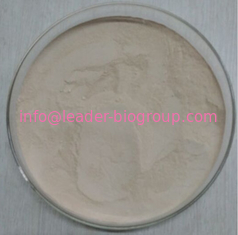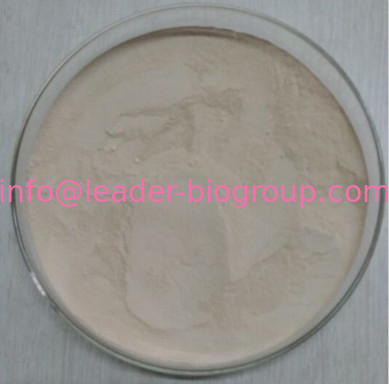Inquiry email: info@leader-biogroup.com
Hot Line +86-029-68895030
+86-029-68569961
+86-029-68569962
Fax +86-029-68895030
| Tetraacetylethylenediamine Basic information |
| Product Name: |
Tetraacetylethylenediamine |
| Synonyms: |
n,n’-1,2-ethanediylbis[n-acetyl-acetamid;N,N’-1,2-ethanediylbis[N-acetyl-Acetamide;N,N’-1,2-ethanediylbis[N-acetylacetamide];N,N’-ethylenebis[N-acetylacetamide];N-Acetyl-N-[2-(diacetylamino)ethyl]acetamide;TetraAcetylEthyleneDiamine(Taed);TEAD;Mykon ATC |
| CAS: |
10543-57-4 |
| MF: |
C10H16N2O4 |
| MW: |
228.24 |
| EINECS: |
234-123-8 |
| Product Categories: |
Daily Chemical Usage |
| Mol File: |
10543-57-4.mol |
 |
| |
| Tetraacetylethylenediamine Chemical Properties |
| Safety Statements |
22-24/25 |
| WGK Germany |
1 |
| TSCA |
Yes |
| HS Code |
29241900 |
| |
| Tetraacetylethylenediamine Usage And Synthesis |
| Chemical Properties |
Tetraacetylethylenediamine is off-white to beige granular powder |
| Uses |
Tetraacetylethylenediamine (TAED) is a bleaching activator which is mainly used in detergents and additives for laundry washing and dishwashing. Typical concentrations of TAED range between 1.4% and 13% in these products. A small amount of the produced TAED is also used in bleaching of paper, textiles and for the generation of Peracetic acid.
Peroxide bleach activator for household detergents, paper pulp. |
| Preparation |
Tetraacetylethylenediamine (TAED) is produced in a two stage process from ethylenediamine (ED) and acetic anhydride (Ac2O). ED is first diacetylated to DAED. In the second step DAED is subsequently converted with Ac2O via TriAED into TAED (Clariant, 1999). TAED is crystallized out of the reaction mixture, filtered, washed and dried, and if necessary also granulated. The raw materials used occur almost quantitatively in the product. Byproducts are not formed.
TAED was prepared by acetylation of diacetylethylenediamine (DAED) with acetic anhydride in a 5 L reactor coupled with a packed distillation column, 2.5 cm in inside diameter and 1 m in length. The reaction temperature was set at 135 °C and the reflux ratio at 6. The molar ratio of acetic anhydride to DAED was varied from 3 to 5. A TAED yield as high as 80% was obtained, higher by 15% than in the absence of distillation. |
| Health Hazard |
TAED is of very low toxicity by all exposure routes examined. Up to 2 g/kg BW there is no acute toxicity. TAED is practically non-irritating to skin and eyes and there is no evidence of a sensitizing potential by skin contact. The only effect after repeated oral and dermal dosing was reversible centrilobular hypertrophy in the liver at high doses due to the induction of metabolizing enzymes. In a 90-day whole body inhalation study no adverse effects in the rat lung, respiratory tract or nasal mucosa were observed. Biokinetic data showed that TAED is rapidly absorbed from the rat intestine and largely metabolized via diacetylation to TriAED and DAED which are excreted in the urine. |
|

